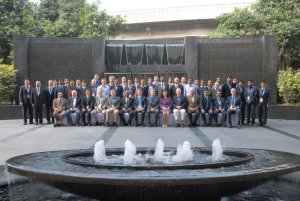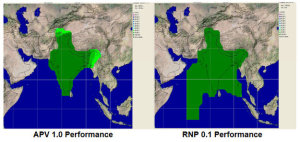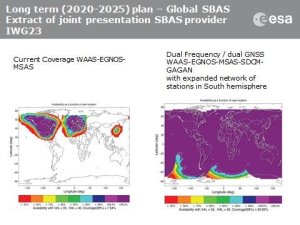Plans to use Galileo and other satnav systems for next-generation satellite augmentation systems for aviation and other high-performance uses took a significant step forward at the latest gathering of worldwide operators and experts.
Satellite augmentation systems combine additional ground stations and satellite transponders to sharpen satnav accuracy and reliability across given geographical regions – based on the US GPS for now, but with plans to move to a multi-constellation design additionally employing Europe’s Galileo, China’s Compass and Russia’s Glonass systems in the post-2020 era.
The 26th Satellite Based Augmentation Systems (SBAS) Interoperability Working Group (IWG) took place in New Delhi, India on 5–7 February.
Among its achievements was to converge on a standard message definition for one of the channels – known as L5 – of the planned second-generation SBAS systems, which will utilise dual-frequency, multi-constellation signals.
“The aim is to have it ready to submit to the official international SBAS standardisation bodies (the International Civil Aviation Organisation and the Radio Technical Commission for Aeronautics) as soon as October”, explains ESA’s Didier Flament, co-chair of the IWG.
The meeting also marked the significant progress made by Indian’s own SBAS system GAGAN, which underwent its final stability test last summer, followed by its safety certification in December. At this point GAGAN was declared certified for non-precision approach users, followed by its safety-of-life service being formally offered to civil aviation users on 14 February. GAGAN will provide improved accuracy, availability and integrity necessary to enable users to rely on satnav signals for all phases of flight (from en route as well as approach to all qualified airports within the GAGAN service area).
There are currently four certified SBAS:
- EGNOS (European European Geostationary Navigation Overlay Service), designed and built by ESA, operated by the European Satellite Service Provider (ESSP) and overseen by the GSA.
- WAAS (Amrican Wide Area Augmentation System), developed and operated by the Federal Aviation Administration, with an extension over Canada called CWAAS (Canadian WAAS). WAAS celebrated its 10th anniversary of operational life last July.
- MSAS (Japanese Multi-functional Satellite Augmentation System), developed and operated by Japan’s Civil Aviation Bureau. Japan is currently discussing plans to merge this capability with their new home-grown satnav system, QZSS.
- GAGAN (GPS aided geo-augmented navigation system) has been jointly undertaken by the Airports Authority in India (AAI) and the Indian Space Research Organisation.
There are some other SBAS systems under definition or development, such as the Russian SDCM, Chinese SNAS and Korean K-SBAS.



